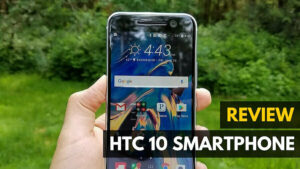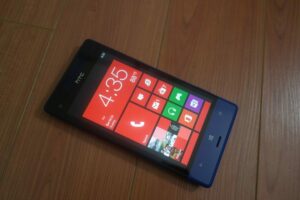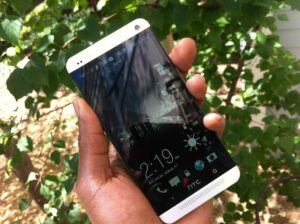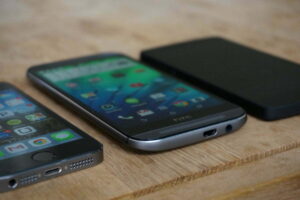Apple started the one-trick pony for smartphones. Samsung, the largest producer of the best Android phones in the world, took several years to partially catch up with two major flagship models and dozens of offshoots. HTC, in much more dire straights, decided to accept Cupertino’s challenge wholeheartedly after a somewhat failed attempt after their One-series of smartphones last year. This year, they put out the HTC One, and little else.
This is not that story. This is the story of the last of a dying breed at HTC, the Droid DNA, a Verizon-exclusive smartphone with no equivalent on another carrier. It may be the last non-flagship phone from the company. And while that’s fine for most smartphone buyers, what a great swan song from a dying breed.
The Droid DNA is no slouch. It has a 5″ 1080p display with HTC’s Super LCD 3 technology, which is a fancy way of saying that the screen is the best that the South Korean maker has made yet. And it certainly is: the colors are excellent, the brightness and contrast nearly pitch-perfect, and general use of the panel for everything from reading documents to watching movies is on par with the best. I prefer it to the iPhone 5 and other high-end smartphones because of the depth, which is in part thanks to the Gorilla Glass 2 glass, though I’m not entirely impressed by the scratch resistance. If you look closely at the glass, you’ll notice markings just from pocket use.
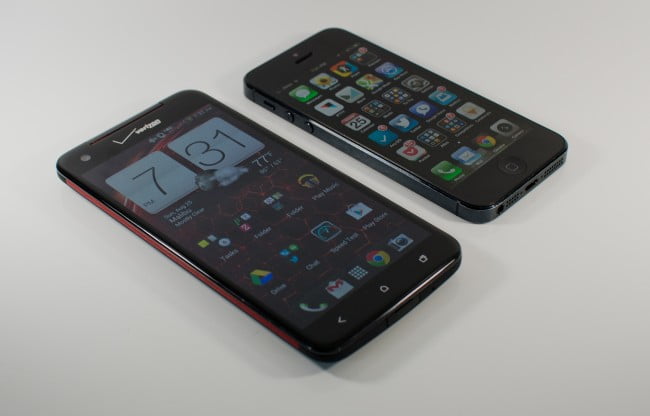
Inside is a 1.5GHz quad-core Snapdragon Krait processor and 2GB of RAM, along with 16GB of internal storage but no upgradeable memory with MicroSD cards. The Adreno 320 GPU is good, not great, though users won’t see any performance pain when using the DNA. It’s perfectly fluid and snappy. After excessive testing, I’m thoroughly impressed with the DNA’s speed and general capabilities.
The 2020mAh battery is smaller than several major competing models, but battery life doesn’t suffer. I’ve used this Droid for over two days on a single charge. I’ve also used it for 6-8 hours straight with 2+ devices connected using the Wi-Fi hotspot feature. My only concern regarding power and usage is not the battery life, which is phenomenal, but the heat. The Droid DNA gets uncomfortably warm when under strenuous use. Nevertheless, if you would like to upgrade to a device with a better battery, find out more in this Htc 10 review.
In the hand the DNA feels good, though fat and large. Unlike similarly sized phones like the Samsung Galaxy S III, it’s thicker and heavier, more like smartphones from the past two years than the thinner, sleeker models that have come over the past 12 months. That’s not a particularly bad thing, though if you want a phone that will fit comfortably in tight jeans, the DNA isn’t for you. In everyday use the Droid is comfortable to grip thanks to the flat sides and the curved rubberized back, though it doesn’t fit well in docks nor is it particularly pleasing to keep on a tabletop.
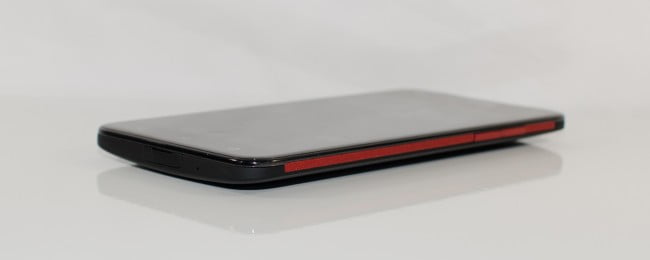
The camera is the last of HTC’s previous models, a mediocre 8MP shooter that provides decent but not great photos. If you’re looking for a smartphone with a great camera, stick with the newer HTC One that Shawn reviewed.
Overall the build is very good and I recommend it for smartphone buyers, so long as size in the pocket or bag isn’t a major concern. There are some newer devices with thinner profiles; by far the best hardware feature is the gorgeous display.
As the last of it’s kind, the Droid DNA doesn’t have any particularly magnificent software features like the HTC One has. It’s a basic and nearly bare-bones version of Android 4.1, which is perfect for the device. It’s extremely snappy and very easy to use. HTC’s Sense UI is great for the few things this version does, like have four insta-open apps from the lock screen and several separate apps for particular uses like photography.
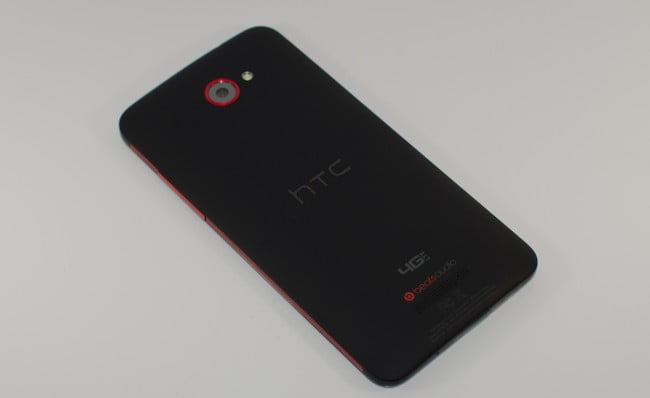
The excellent speed of the DNA is complemented greatly by Verizon Wireless’ great coverage and data speeds. In Los Angeles, Verizon’s coverage is near perfect in the greater LA area, though in the few weak spots the Droid DNA does drop calls unlike other tested smartphones. The antenna isn’t as powerful as it could be; in Santa Monica, which is notoriously bad for data speeds because cell towers aren’t allowed in many areas, data speeds are mediocre while other tested phones were fair to good. General call quality is good to great. Sound quality is good, though the speakerphone is tinny and too loud.
As impressive as the Droid DNA is, the problem with being the end of a dying breed is that the last isn’t always the best. Current one-trick ponies like the HTC One and Samsung Galaxy S IV are both better devices. But for a great starting price of $50 plus a two-year contract, it’s hard to say no to the DNA unless you must have an excellent camera. The display, speed, power efficiency, and design are all great and definitely not what you’d get for so little money down normally. If you don’t like any of the options so far, read this Htc One M8 review.
Bottom Line: If you’re ready to upgrade and short on cash but still want the best, the Droid DNA only compromises camera performance. Everything else is on-par with today’s top phones.
